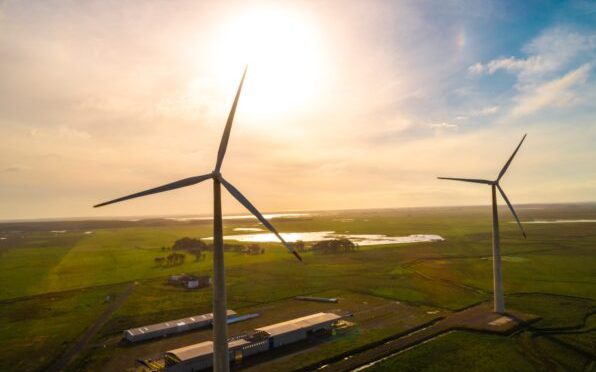In July 2022, wind energy in Brazil reached the mark of 22 gigawatts (GW) of installed capacity, enough to supply 28.8 million homes per month. This is equivalent to 20 cities like São Paulo.
According to the Brazilian Wind Energy Association (ABEEólica), the sector represents 12% of the country’s electricity matrix, with 812 wind farms, spread over 12 states, and 9,294 wind turbines in operation.
In the month of June alone, Brazil obtained an increase of 165.6 megawatts (MW) in the electrical matrix, according to the National Electric Energy Agency (Aneel). Of the total, more than half (87.6 MW) come from wind farms.
The technical director of the association, Sandro Yamamoto, highlights the two main reasons for the increase in wind generation in Brazil: the quality of the Brazilian wind and competitive prices.
“Brazil is blessed by the quality of the winds, especially in the Northeast region. They are very intense winds, that do not change direction, and that make us have the best winds in the world. So, the plants installed in Brazil generate much more energy than those installed in other countries. This means that the price of energy sold by wind farms is also competitive”.
Wind energy and development
The most recent data from ABEEólica show that, from 2011 to 2022, the construction of wind farms generated almost 196 thousand jobs, an average of 10.7 jobs per installed MW. Furthermore, each BRL 1.00 invested in wind farms increased GDP by around BRL 2.90.
The director of Institutional Relations of the National Confederation of Industry (CNI), Mônica Messenberg, highlights the progress.
“The expansion of wind farms brings, in addition to generating employment and income, technological innovation, development of new business models, in addition to other facilities that are expected to improve the competitiveness of the Brazilian industry.”
According to ABEEólica, since the installation of the wind farms, the real GDP of the municipalities grew by 21.15% and the Municipal Human Development Index (IDHM) increased by 20%.
Investment and expansion of wind energy
ABEEólica estimates that the installed capacity of wind power could reach 37.09 GW in 2026. For Sandro Yamamoto, the sector can exceed the rate of 12% of the Brazilian electricity matrix.
“Today we have 800 plants installed, 400 more to install in the next 4 years, in addition to new technologies. Wind power with storage system can deliver power 24 hours a day. We just need to move towards more competitiveness in terms of storage. So there is a lot of room for wind energy to grow in the Brazilian electricity matrix.”
Currently, Brazil ranks 6th in the world ranking of installed wind power capacity. In 2012, the country was ranked 15th. According to Sandro Yamamoto, investments in Brazil have increased in recent years.
“In 2021, around US$5 billion was invested in wind energy in Brazil, which represented 44% of all investments in renewable energy in the country, which made Brazil, last year, surpass France. And we were the 3rd country that installed the most wind farms last year. We are ahead of many countries in terms of renewable electricity generation, but investments must continue.”
According to Mônica Messenberg, Brazil has already achieved the desired energy transition worldwide, since 85% of the Brazilian electricity matrix is ??made up of renewable energies, while the world average is only 30%.
“While the world concentrates efforts to replace fossil fuels with clean ones, Brazil’s biggest challenge is in the expansion of matrices, to maintain the percentage of renewables with security in supply. Therefore, we have to promote the diversification of these sources. The complementarity between them requires planning to better take advantage of the attributes of each of them.”


